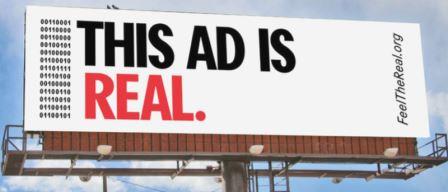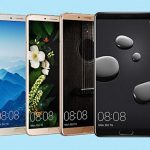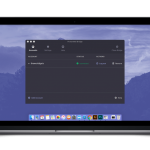Sensing vulnerability, Out-of-house goes on the assault in opposition to digital display
exchange crew seeks to capitalize on complexity and confusion with online show promoting amongst media planners and patrons.

In what appears to be a primary, traditional media has gone on the offensive towards digital merchandising. In a document called this is What reality seems like, the out of doors promotion affiliation of the usa (OAAA) makes use of on-line fraud, viewability, bots and advert blockading to query the effectiveness and worth of on-line show advertising.
the trouble is a component of the alternate workforce’s “feel the actual” campaign in quest of to show the worth of Out-of-dwelling merchandising (OOH).
The report calls online display (together with programmatic) “advanced, opaque, intrusive and not directly uncertain.” It begins with a variety of sources and 0.33-birthday party articles cataloging the current woes of digital display:
- fifty four % of online show ads are non-viewable.
- Non-viewability wasted $7.5 billion spent on digital banner commercials in 2013.
- sixty one.5 percent of web traffic is from bots (2013 stat).
- higher CPM media attracts more bot visitors.
- forty % of the arena’s web users have put in ad blockers.
- Bot fraud will price manufacturers $7.2 billion globally this 12 months.
- Estimates argue handiest eight p.c of digital impressions are ever seen with the aid of a real individual.
each and every this sort of stats may be disputed, but mutually, they existing an indictment of the present state of digital show promotion.
The record continues, as might be anticipated, by way of contrasting certain information about the effectiveness of OOH. paradoxically, some of that has to do with OOH’s capacity to stimulate search, mobile job or other online analysis:
- 23 p.c of individuals exposed to OOH use their cell device to seek for extra data vs. sixteen percent for other media.
- OOH is almost three times more efficient at using online search process than tv, radio and print.
the usage of the vocabulary of digital media, the file argues that OOH can also be personalized and focused to specific “mediums” (building, bus, T-shirts and more) and locations and even to succeed in “influencers.” The exchange crew then uses its “feel the true” promotional campaign as a case study to argue that OOH is a more practical and efficient media buy than digital show.
The document makes use of digital channels to show the value of the traditional medium, saying the campaign “drove 27,061 unique guests to FeelTheReal.org between September 25 and November 15, 2015”:
- 73 p.c got here from cell phones.
- 25 p.c got here from laptop.
- Two percent got here from tablet.
- fifty seven p.c had been male, forty three p.c feminine.
The file also discusses the affect of the campaign on Millennials:
- 70 % entered the URL directly into their browsers.
- 85 percent of all guests mentioned they had arrived at the web site after seeing an OOH ad in the real world.
- 9 p.c stated they had been there [feelthereal.org] on account of word of mouth.
The use of digital media to measure conventional OOH is moderately ironic however coherent. it’ll be fascinating to look whether or not any of the web ad change groups reply. one by one and somewhat coincidentally, the IAB these days issued its first Primer for Publishers on making improvements to advert Viewability.
(Some photography used below license from Shutterstock.com.)
advertising and marketing Land – web advertising information, methods & tips
(34)














